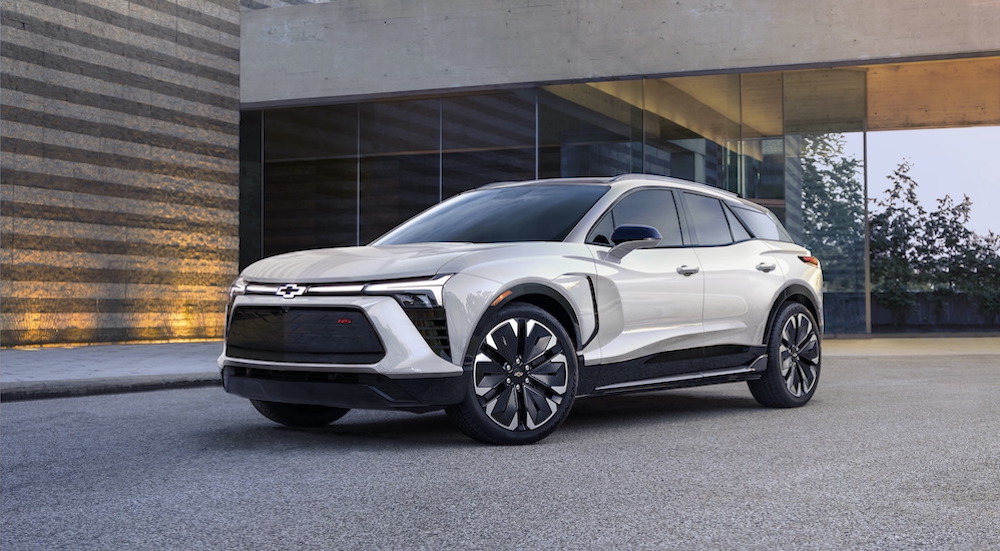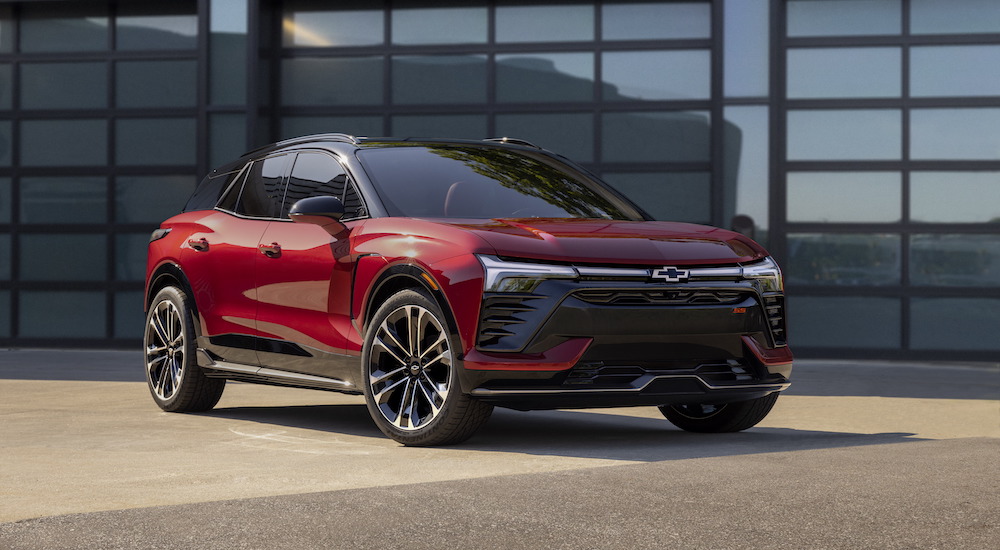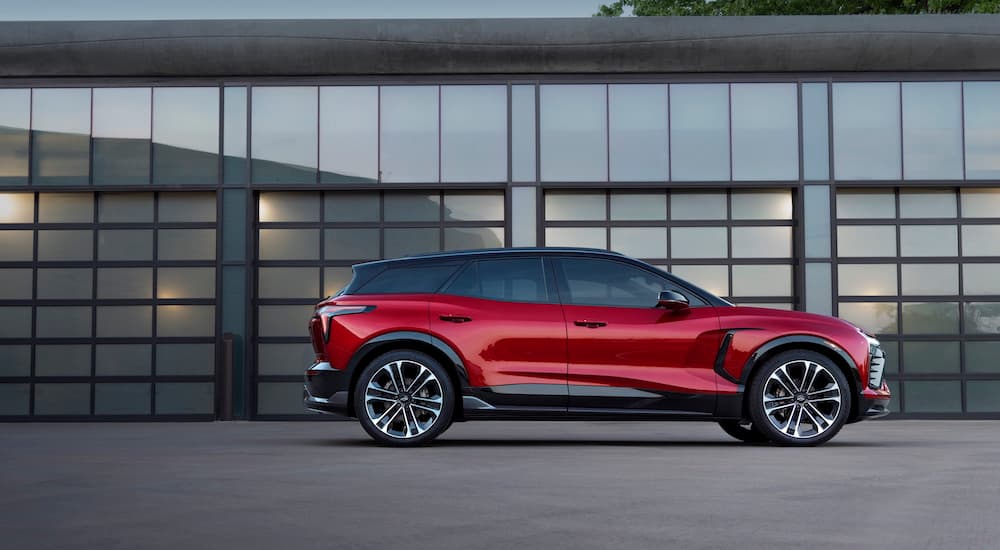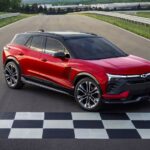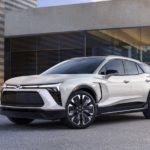Like it or not, the electrification of the auto industry is officially in full swing, and since both California and the EU have passed laws that will eventually ban gas-powered cars entirely, it’s most likely here to stay. Since this sudden shift in the market is unprecedented, we’ve seen all kinds of approaches to electrification, and you can find just about all of them at your local Chevy dealer. Chevrolet has created purpose-built EVs like the Bolt and is also creating all-electric versions of their most popular nameplates, from the Equinox to the Silverado. The first of these established-nameplate electric vehicles is the Blazer EV, which debuted for the 2024 model year.
Though it’s a very new model, the Blazer EV has already made quite a splash in the industry, and with the end of the year quickly approaching, it’s starting to make its way onto ‘best of’ lists. Is all of this hype really deserved, or is it overblown? Let’s dig in and see what this electric SUV has to offer and what kind of attention it’s been getting from trusted industry experts.
History of the Blazer
This isn’t the first major overhaul that the Blazer nameplate has seen. The original Chevy Blazer, which debuted back in 1969, is a very different vehicle from the latest iteration that revived the name in 2019. Fifty years later, what was once a truck-like SUV with a boxy body better suited to off-roading than a daily commute became a sleek and sporty crossover with a comfortable interior and smooth ride. Given its recent evolution, it makes sense that this is the first Chevy nameplate to get an EV version, once again changing up what it means to be a Blazer with an all-new powertrain and modified body.
Compared to the gas-powered Blazer, the Blazer EV has a longer wheelbase, but thanks to short overhangs in the front and rear, it will still be easy to navigate on tight city streets. It’s a few inches shorter in height than the non-EV Blazer but still has plenty of ground clearance, allowing it to drive unpaved roads without damage to vital underbody components. But while there are plenty of changes to the Blazer’s design, some things remain the same, at least for now. Though the Blazer EV has no practical need for a grille, its front face still features one, probably because SUV drivers have come to know and love the aesthetics of a grille. As EVs rise in popularity, it will be interesting to see if these sorts of vestigial features stick around or go the way of the dodo over time.
Standard Fare
Let’s take a look at the features that come standard across the 2024 Blazer EV lineup without any trim upgrades or additional packages required. The entry-level LT has a battery that will get you an estimated 279 miles of range on AWD, which is pretty impressive for an EV of this size and is perfectly practical for commuting or taking longer trips in areas that have even a decent number of charging stations along the way. Large 19-inch wheels come standard, with a modern design that adds to the exterior aesthetic.
Inside, Chevy has pulled no punches when it comes to tech, working to make this SUV really feel like the car of the future. To that end, an enormous 17.7-inch diagonal touch-screen infotainment display comes standard, making settings controls and camera views large and easy to see at a glance. On top of that, there’s an 11-inch diagonal driver information center more directly in the driver’s line of sight that complements the main display. Of course, there’s also a full suite of standard driver-assist features, like automatic emergency braking, lane keep assist, and Intellibeam automatic high-beam headlights.
High-Powered SS Trim
The top trim of this brand-new vehicle has a storied heritage. Chevrolet’s first SS vehicle was an experimental Corvette built back in the 1950s. Since then, several iconic Chevy vehicles have gone on to wear the Super Sport badge, from the Impala to the El Camino. Since the Blazer will be the first Chevy EV to get the SS treatment, it’s going to have to meet some high expectations. The folks at Chevrolet are fully aware of this and have risen to the challenge thanks to their Wide Open Watts technology.
With Wide Open Watts mode active, the Blazer SS is designed to produce up to 557 hp and 648 lb-ft of torque, with a performance AWD drivetrain that provides plenty of traction in a wide range of road conditions. According to Chevrolet, the Blazer SS can go from zero to sixty in under four seconds, so drivers can get their thrills without the need to burn fossil fuels. And with an estimated range of 294 miles on a full charge, the joy ride can take you pretty far.
While the powertrain is a significant change from Chevy’s earlier SS models, some things can stay the same during the transition to electric. For instance, trusted Brembo brakes can be found up front, and the Blazer SS has a sport-tuned chassis built by experienced engineers who know their way around a performance vehicle. With all that in mind, it seems clear that the Blazer EV has well and truly earned its place among the SS models.
Awards Garnered (So Far)
The Blazer EV’s innovation hasn’t gone unnoticed. In October, MotorTrend announced that the EV was the winner of its coveted SUV of the Year Award for 2024. This might not come as a big shock to those who follow these awards since Chevy has already won the 2017 Car of the Year Award for its Bolt EV. However, it’s always worth paying attention when an EV wins a big award pitted against gas-powered competitors. These wins prove that EVs can be stacked against the traditional powerhouses and come out on top, if they’re designed well enough to be practical and enjoyable for everyday driving and beyond.
The North American Car, Truck, and Utility Vehicle of the Year (NACTOY) Awards organization has been in the game for several decades, honoring vehicles that stand out for their excellence. For the 2024 North American Utility Vehicle of the Year award, both the Blazer EV and the Chevy Equinox EV have been named as finalists, taking up 20% of the list of ten vehicles, up against beloved nameplates like the Honda Pilot and Mazda CX90. The fact that Chevrolet has two electric SUVs on the list is a clear sign that the company isn’t messing around when it comes to electrification.
What’s Next for the Blazer EV?
While the Blazer EV has already been recognized for excellence by several automotive organizations, it remains to be seen whether that will translate to popularity and staying power with everyday drivers. If so, we wouldn’t be surprised to see the Blazer EV eventually replace the gas-powered Blazer entirely, a transition that should be fairly smooth if charging infrastructure continues to spread across the country and the cost of building EVs continues to decrease over time. And with rugged EVs like the GMC Hummer EV and Rivian R1T already tearing up the trails, the Blazer might even be able to return to its roots in the future with a dedicated off-road trim. We’ll certainly continue to keep an eye on this promising model as we drive into our electrified future.
